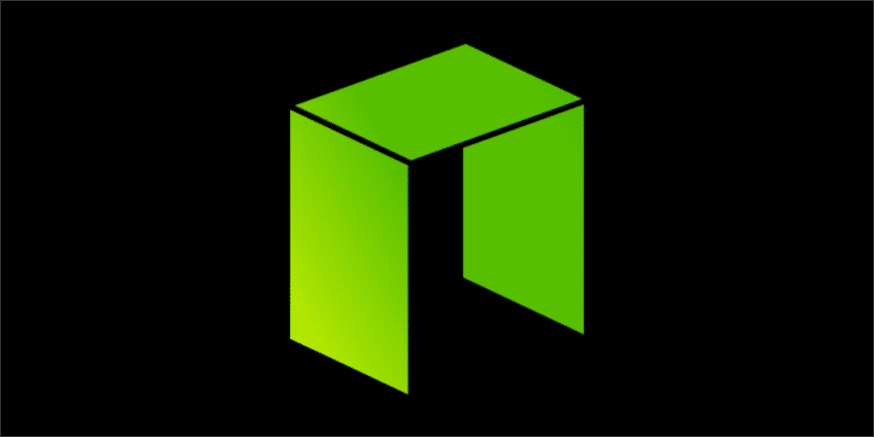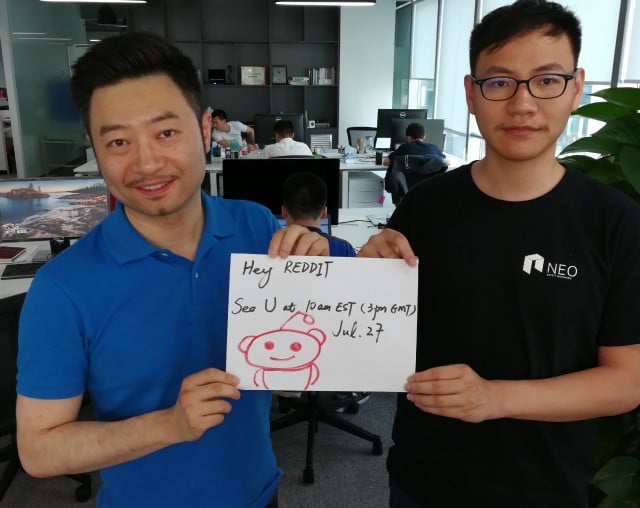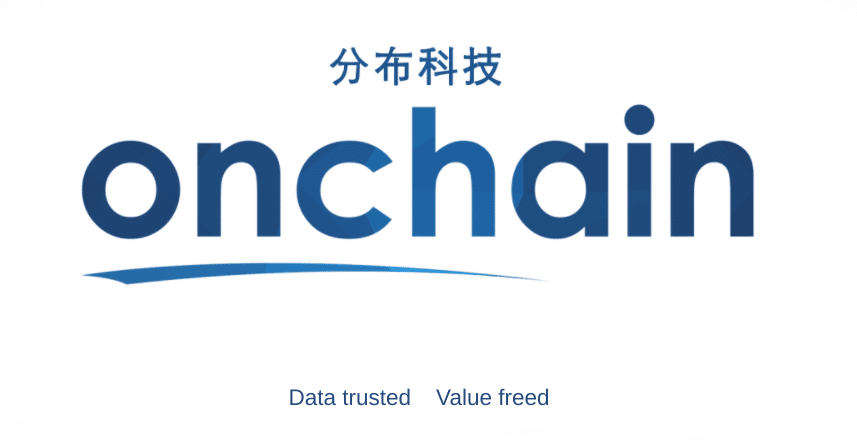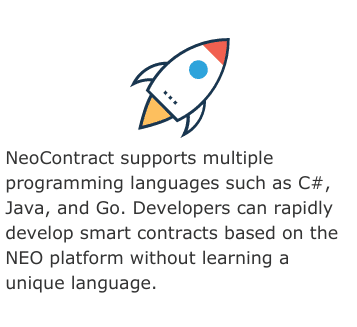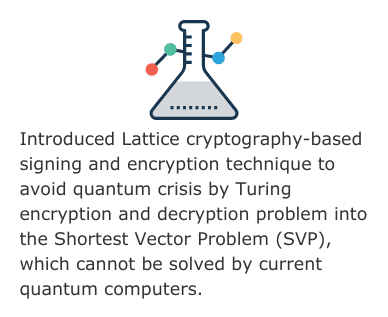- NEO’s History: AntShares & Chinese Entrepreneurship
- Current Network
- NEO Uses Two Separate Tokens
- NEO’s Key Components
- Advanced Features Powered by GAS
- Conclusion
An Introduction to GAS
GAS is the operational token that powers the smart contracts and tokens built on the NEO blockchain. If you’re reading CoinCentral, you’ve probably heard of Ethereum. It’s possible you’ve also heard of Ethereum’s Chinese-based competitor, NEO. On Ethereum, Ethereum gas is the toll developers pay when executing smart contracts. It’s payable in ETH. On NEO, they’ve created a separate operational token for developers, and they’ve named it GAS.
Especially in recent month’s, NEO’s star is on the rise. After a re-brand in 2017, the smart contracts platform is focusing on adding functionality to smart contracts. NEO’s architecture makes smart contracts easy to code, linkable to digital assets and identities, and government compliant.
As NEO has grown, so has its share price in the form of the NEO coin. Investors who are new to NEO might also believe this NEO coin is the operational token that powers smart contracts on the network. That’s not the case. GAS is what developers use for their smart contracts on NEO.
The price of GAS has skyrocketed over the past few months as more investors are getting wise to its use in the NEO ecosystem. Its popularity as an investment vehicle has also opened up with its introduction on Binance as a tradable coin. Right now, you can only trade GAS on Binance. Otherwise, if you want GAS, you’ll have to earn it. In this article we’ll look at NEO, GAS, what it is, and how to earn it.
NEO’s History: AntShares & Chinese Entrepreneurship
NEO was originally named AntShares. AntShares was the first open source blockchain project in China to gain widespread notoriety. The founders of AntShares, Da Hongfei and Erik Zhang knew the blockchain was a powerful tool. They imagined an economy where digital assets could be secured and traded on the blockchain. You could even incorporate identity measures to create digital signatures for real people. The same identity technology could also power tracking measures for real-life objects.
The AntShares idea came in response to the problems caused by China’s 2005 Digital Signature Act, which allowed people to sign legal documents digitally. However, it set stringent requirements on how those signatures had to be verified. To Da Hongfei and Eric Zhang, the blockchain presented an ideal solution to these identity verification problems. They wanted to build a blockchain that would be government-compliant. In the end, they hoped companies would use AntShares to build compliant contracts and supply chains.
AntShares continued until 2017 when they rebranded the company as NEO. The new name and image gave the company more credibility. All AntShares tokens became NEO tokens. However, there were also AntCoins that provided the gas for executing contracts on the AntShares network. These AntCoins were renamed GAS.
Onchain
No discussion of NEO and AntShares would be complete without a quick overview of Onchain. Onchain is a sister company of NEO (formerly AntShares), started by the same founders. It is completely separate from NEO, but the two companies work together.
Onchain designs and builds blockchains for business use. Many companies are interested in the ways they might use private distributed ledgers. Onchain’s Distributed Networks Architecture helps businesses assess the usefulness of blockchain digital assets in their current business practices. Onchain has worked extensively with Microsoft China and other large companies to develop blockchain business cases.
Understanding Onchain is important to learning about GAS for two reasons. First, NEO’s founders are business focused, and they’re actively building private applications, in addition to the public-facing NEO. This means they have a deeper understanding of what businesses need in a smart contracts platform. A huge advantage.
They’re also planning future functionality for NEO called NeoX (as we’ll see later in this article). NeoX would allow for cross-blockchain transactions. This means large corporations could link their private blockchains to the NEO blockchain to get the best of both worlds.
Businesses executing contracts on NEO will need GAS in order to power those transactions.
Current Network
NEO works on a unique consensus mechanism. Instead of proof-of-work or proof-of-stake, NEO uses Delegated Byzantine Fault Tolerance (dBFT). In dBFT, the stakeholders in NEO vote on a group of bookkeepers for every block. The bookkeeping nodes create blocks, and then the network must agree on the new block. This system requires fewer resources than other types of consensus, and it’s also more capable.
Using this system of voted bookkeepers, NEO reaches 1,000 transactions per second and could theoretically reach 10,000 transactions per second with the right optimization. Compared to Ethereum’s current network capacity of 15 transactions per second, NEO has a clear advantage. This is especially true for large-scale, enterprise usage of smart contracts.
The dBFT also combines digital identity technology. Bookkeepers can be real people and institutions, known by name to the network. This is important because NEO wants to be government compliant. It’s possible for law enforcement, regulators, and the judiciary to register and monitor compliant financial assets in the NEO network. While not necessarily essential to NEO at all times, the NEO network plans to support compliance when necessary.
NEO Uses Two Separate Tokens
Now that we’ve covered dBFT and NEO’s bookkeepers, we can start to understand the difference between the two tokens behind the NEO platform: NEO and GAS.
NEO: The Management Token
NEO is not a currency or asset. It merely stands as voting rights in NEO governance and management. This means that owning 1 NEO entitles you to a vote about who will be the bookkeepers for the next block. NEO stakeholders also vote on network changes. There are 100 million total NEO, all created at the beginning of the network. NEO tokens cannot be subdivided.
NEO ownership is also how GAS is distributed with every new block. If you own NEO when a block is completed (every 15-25 seconds), you’ll receive GAS. Owning 1 NEO would earn you around .0003-.0005 GAS per day.
NeoGas (GAS): The Operational Token
The full name for GAS is NeoGas, according to the NEO whitepaper. It’s the operational token that fuels the smart contracts and tokens built on the NEO blockchain. NEO uses a separate token like GAS so that ownership/management of NEO is not directly tied to the utilization of the platform.
The supply of GAS grows by 8 with every block (15-25 seconds). These 8 GAS are split between all NEO holders. Every two million blocks, the per block GAS reward to NEO holders decreases by 1. The maximum limit of GAS is 100 million tokens, but NEO doesn’t expect to reach that point for 22 years.
NEO holders will need to hold their NEO in private wallets in order to claim their GAS. If you buy NEO and leave it in an exchange wallet, you won’t collect GAS. Various Reddit threads have instructions for setting up your wallet and claiming GAS.
NEO’s Key Components
Since GAS powers the NEO ecosystem, its value is directly tied to the usefulness of NEO. It’s worth looking at what NEO can do, and what they’re planning on implementing in the future.
Digital Assets
Since the founding of AntShares, digital assets have been the core component of this project’s development. The goal behind NEO is making digital assets that are secure, transparent, and difficult to copy, forge, or pirate. There are two types of assets on NEO.
First, global assets are the ones anyone can identify. They’re available on the blockchain, and they can be shared across contracts and projects. These kinds of assets are important for transparency, efficiency, and standardization. They can be stored with varying levels of accessibility.
Contract assets, on the other hand, stay in the private storage area of a contract. When two parties need to exchange confidential information via a smart contract, they’d use contract assets. These assets are restricted to users with permission given through the contract.
Digital Identity
Alongside digital assets is digital identity. This links back to the problem of Chinese signature verification that AntShares and Onchain originally confronted using the blockchain. Once fully implemented, digital identity will allow you to submit identification, facial features, fingerprints, voice recognition, SMS authentication, and other methods to verify personhood and identity. Blockchain-verified identity could then be built into smart contracts and digital signatures.
We can also give identity to assets meaning that physical objects are linked to blockchain data in fundamental ways. This could be as simple as tracking inventory using QR codes. It could also get into more complex methods of merchandise verification or quality testing. Once a physical object has a blockchain identity, it becomes nearly impossible to manipulate the records of its history, preventing all types of forgery and corruption.
NeoContracts
To make assets and identities functionally useful, NEO implements smart contracts. These NeoContracts differ from Ethereum smart contracts because they’re more easily adopted. NeoContracts use C#, Java, and other mainstream programming languages in a scalable virtual machine. This means that developers don’t have to learn a new programming language in order to deploy a NeoContract.
NEO is also planning advanced features to make its contracts more useful, all powered with GAS.
Advanced Features Powered by GAS
NEO has three advanced features under development:
- NeoX –
Discussed earlier in this article, NeoX aims to traverse blockchains. While the NEO whitepaper is unclear exactly how it will function, NeoX promises to offer interoperability between multiple blockchains, including private/public blockchain linkages. - NeoFS – In order to make digital assets and smart contracts more capable, NEO is implementing a file storage and sharing system on the blockchain. This would make it easy to transfer digital files as part of a contract.
- NeoQS –
While not directly a user feature, in the future the NEO network plans to be resistant to attack from quantum computers. Still a far-off threat, knowing that NEO is working on quantum solutions provides a little piece of mind for long-term investors.
Conclusion
NEO has positioned itself as a strong contender to Ethereum in smart contracts. NEO’s focus on assets, identity, and future features also sets it apart from Ethereum. It’s clear that NEO is one of the most important projects we’ve seen come out of China. It’s future as a company is bright.
The GAS token is less an investment opportunity and more an operational token. However, the value of GAS will likely increase along with NEO’s popularity. One option for investors excited about NEO is to purchase the NEO token. Then, you’ll automatically earn GAS with every newly completed block, increasing your dividends. The NEO token will also appreciate as the platform grows in popularity, creating a win-win.
Never Miss Another Opportunity! Get hand selected news & info from our Crypto Experts so you can make educated, informed decisions that directly affect your crypto profits. Subscribe to CoinCentral free newsletter now.






